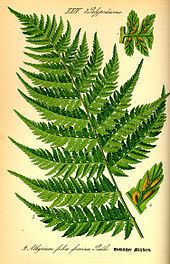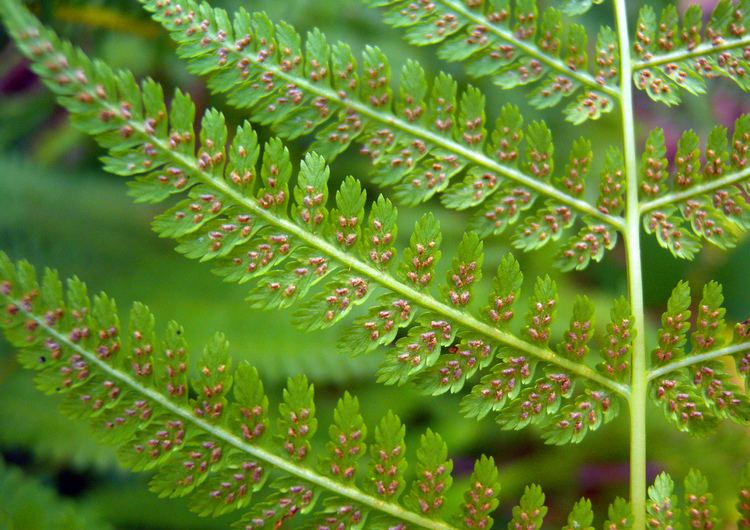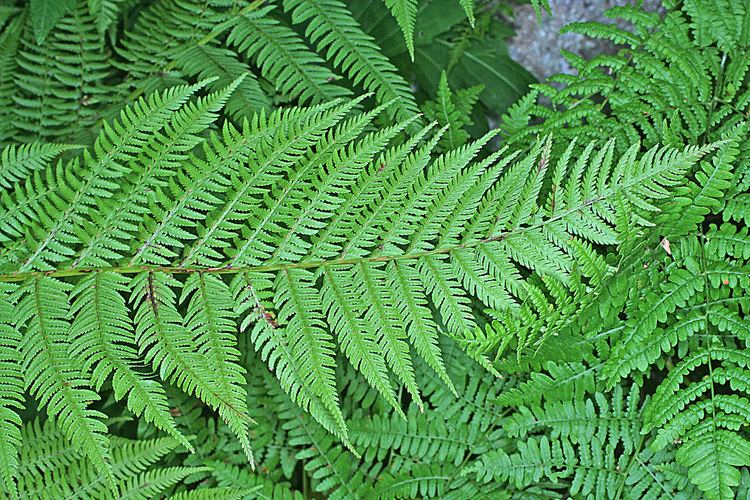Higher classification Athyrium | Division Pteridophyta Scientific name Athyrium filix-femina Rank Species | |
 | ||
Similar Athyrium, Dryopteris filix‑mas, Dryopteris, Athyrium niponicum, Ostrich Fern | ||
Athyrium filix femina lady in red lady fern
Athyrium filix-femina (lady fern or common lady-fern) is a large, feathery species of fern native throughout most of the temperate Northern Hemisphere, where it is often abundant (one of the more common ferns) in damp, shady woodland environments and is often grown for decoration.
Contents

Its common names "lady fern" and "female fern" refer to how its reproductive structures (sori) are concealed in an inconspicuous – deemed "female" – manner on the frond. Alternatively, it is said to be feminine because of its elegant and graceful appearance.

Characteristics

Athyrium filix-femina is now commonly split into two species, A. angustum (narrow lady fern) and A. asplenioides (southern lady fern). The southern lady fern has a broader frond, especially at the base.
Both species are cespitose (the fronds arising from a central point as a clump rather than along a rhizome). The deciduous fronds are light yellow-green, 20–90 centimetres (7.9–35.4 in) long and 5–25 cm (2.0–9.8 in) broad. Sori appear as dots on the underside of the frond, 1–6 per pinnule. They are covered by a prominently whitish to brown reniform (kidney-shaped) indusium. Fronds are very dissected, being 3-pinnate. The stipe may bear long, pale brown, papery scales at the base. The spores are yellow on A. angustum and dark brown on A. asplenioides.
Cultivation and uses
This plant has gained the Royal Horticultural Society's Award of Garden Merit.
The rhizomes and young fronds are poisonous when raw, but edible after cooking.

